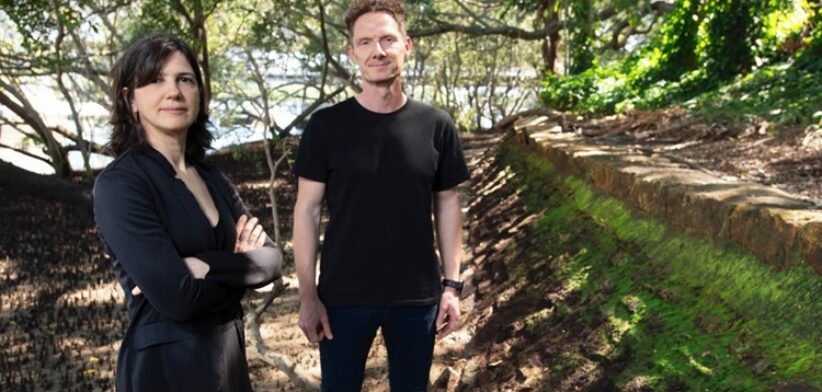Researchers are looking to fast-track the use of marine-based bio-materials in building materials to aid the transition to net zero and help the Brisbane Games deliver on its climate-positive goal.
Meeting in Denmark this month, a global innovation network, which includes two QUT researchers, aims to accelerate the use of algae, seagrass and shellfish, as scalable solutions for low-carbon and future-focused building products.
Professor Tim Schork and Associate Professor Muge Fialho Leandro Alves Teixeira, both from the QUT School of Architecture and Built Environment, are members of Building with Blue Biomass, which is examining ways blue biomass can help reduce the carbon footprint of buildings and accelerate the building industry’s transition towards circular and renewable bio-based materials.
“Amidst our global ecological challenges, growing housing crisis and resource scarcity, the urgency to find sustainable materials for the built environment is paramount,” Professor Schork said.
“The built environment is one of the largest producers of carbon dioxide, and one of the largest consumers of energy and resources in the world, significantly contributing to the overconsumption of our world’s resources.”
He said a net-zero carbon future depended on decarbonising buildings, however, this could not be achieved using only conventional building materials.
“It will require a shift to a circular bioeconomy in the building industry.”
Associate Professor Teixeira said the network was a two-year project to identify state-of-the-art practices in Australia, Denmark and the UK as well as the opportunities and impediments.
She said there was significant potential in using locally sourced biogenic materials to create the buildings of the future.
”Construction consumes approximately 40 percent of all raw materials and produces 40 percent of the world’s carbon emissions,” she said.
“Transforming locally-sourced renewable biogenic resources into new materials and high added-value architectural products that can sequester carbon in the built environment requires interdisciplinary research.”
Professor Schork said Queensland was a national leader in aquaculture, which presented opportunities to repurpose blue-biomass.
“The Brisbane 2032 Olympic and Paralympic Games is set to be the world’s first climate-positive Olympics, and building with blue biomass could be part of the means of achieving that,” he said.
Professor Schork said this month’s meeting in Copenhagen was the first delegation visit of the research network.
He said early next year, QUT and UQ would jointly host the network in Queensland to explore Australian research innovations and market opportunities in this area, before meeting again in the UK at the end of 2025, with the outcomes of the findings to be shared in a white paper.








